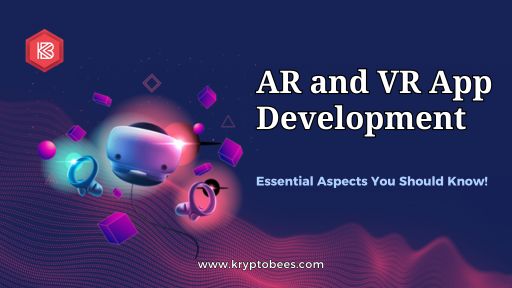The realms of Augmented Reality (AR) and Virtual Reality (VR) have broken new ground in the world of technology, transforming the way we interact with digital content. From enhancing our real-world experiences to creating entirely immersive virtual environments, AR and VR app development have unlocked a universe of possibilities. Let's delve into the impressive features of AR and VR app development that are shaping the future of these immersive technologies.
Real-time Interaction
AR and VR apps offer real-time interaction that bridges the gap between the digital and physical worlds. Users can engage with computer-generated elements in their immediate environment or explore virtual landscapes as if they were physically present. This real-time interactivity is achieved through a combination of sensors, cameras, and advanced algorithms, creating a seamless blend of digital and real-world elements.
Spatial Awareness
AR and VR apps excel at spatial awareness, allowing them to understand the user's surroundings and adapt accordingly. For AR apps, this means overlaying digital information onto the real world with precision. VR apps create a fully immersive environment where users can move and interact in a three-dimensional space. This spatial awareness is crucial for creating a convincing and engaging experience.
Gesture Recognition
One of the most impressive features of AR and VR app development is the ability to recognize and interpret user gestures. This allows for intuitive and hands-free interaction. Users can simply wave, point, or perform specific gestures to manipulate objects, navigate menus, or trigger actions within the app. Gesture recognition technology has come a long way, making the user experience more immersive and natural.
3D Object Tracking
AR apps can track and interact with 3D objects in real-time. This is especially valuable in fields like industrial maintenance, where AR apps can superimpose digital instructions or data onto physical machinery. Additionally, VR apps use 3D object tracking to enable realistic physics simulations and object interactions within virtual environments, enhancing the feeling of presence.
Haptic Feedback
To further enhance the sense of immersion, both AR and VR app developers have integrated haptic feedback technology. Haptic feedback provides users with tactile sensations that correspond to their actions within the app. This can include sensations such as vibrations, resistance, or even temperature changes, adding an extra layer of realism to the experience.
Cross-Platform Compatibility
In a world where users interact with various devices, cross-platform compatibility is essential. AR and VR app development is geared towards making experiences accessible across a range of devices, including smartphones, tablets, VR headsets, and AR glasses. This adaptability ensures a broader user base and greater reach for your application.
Customization and Personalization
AR and VR app development allows for a high degree of customization and personalization. Users can tailor their experiences to their preferences, creating a unique journey every time they interact with the app. This level of personalization is achieved through user profiles, preferences, and AI-driven recommendations.
AI Integration
The integration of artificial intelligence (AI) is a significant trend in AR and VR app development. AI can enhance the user experience by adapting content in real-time, optimizing performance, and offering personalized recommendations. AI-driven virtual characters and chatbots can also engage with users in a lifelike manner, making the experience more dynamic.
Multi-User Experiences
AR and VR apps are now focusing on social and collaborative experiences. Users can interact with one another in shared virtual spaces, conduct meetings, or enjoy multiplayer gaming. This feature enhances the social aspect of these technologies, making them more appealing and versatile.
Conclusion
AR and VR app development is a dynamic and rapidly evolving field, offering an array of impressive features that promise to revolutionize the way we interact with digital content. From real-time interaction to gesture recognition, and spatial awareness to haptic feedback, the possibilities are boundless. As technology continues to advance, we can expect even more innovative features to emerge, taking us deeper into the immersive worlds of AR and VR. The future holds endless possibilities, and we are just beginning to scratch the surface of what AR and VR can offer.






Comments